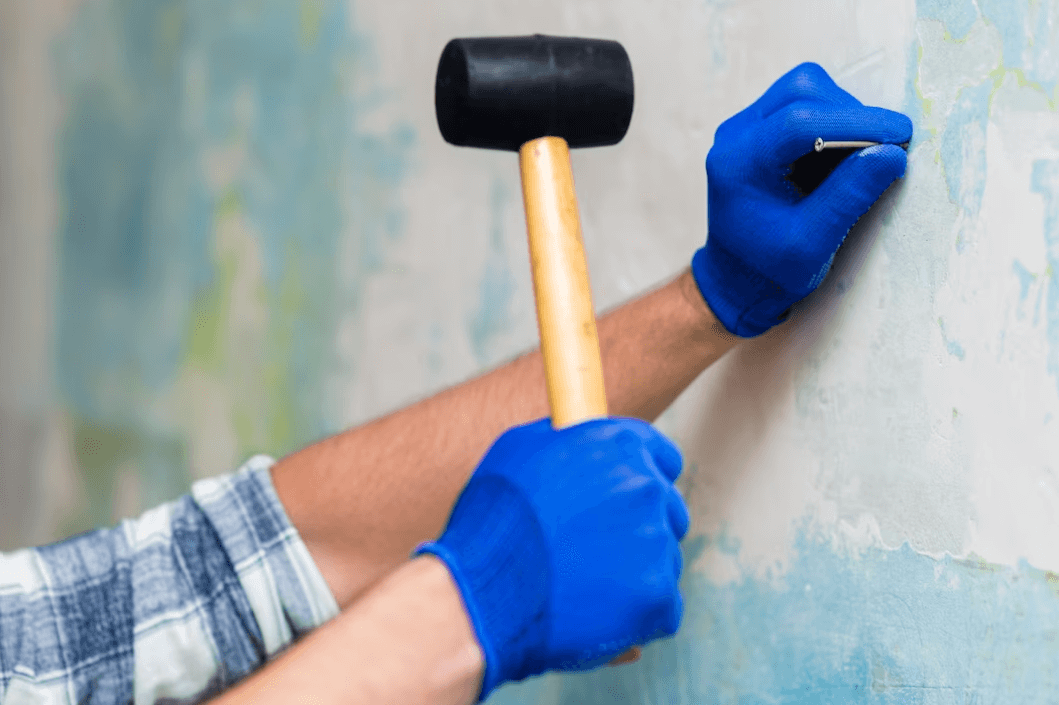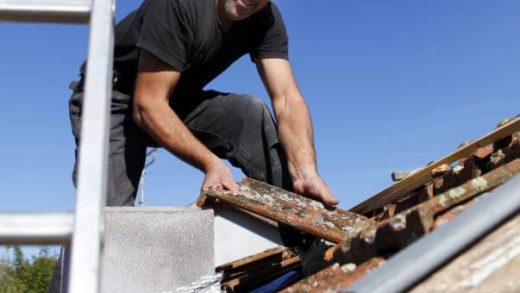The Pro’s Guide to Choosing the Right Roofing Hammer
Why the Right Roofing Hammer Matters
Choosing the right roofing hammer is crucial for any professional roofing project. The hammer you select can make all the difference in terms of your efficiency and safety while on the job.

A roofing hammer serves more than just a basic purpose of driving nails into shingles or other roofing materials. It requires precision and accuracy to ensure proper installation, which will prevent leaks or damage over time.
Using a poorly designed or inappropriate hammer for your particular project could result in subpar workmanship, damage to the materials you are working with, or worse – personal injury as a result of an accident.
By selecting the appropriate tool for your specific needs, you’ll be able to complete projects efficiently and effectively without sacrificing quality. A well-designed roofing hammer will also improve your comfort during use, minimizing fatigue on long projects.
Ultimately, investing in a high-quality roofing hammer is not only important but necessary for any professional roofer looking to deliver top-notch results every time they take on a new project.
Understanding the Role of a Roofing Hammer
A roofing hammer is an essential tool for any professional roofer. It plays a crucial role in the installation and repair of roofs, making it one of the most important tools to have in your toolkit.
One of the primary roles of a roofing hammer is to help you drive nails into shingles or other roofing materials with precision and accuracy. This task requires a certain level of skill and experience, but having the right type of roofing hammer can make all the difference.
Another important function that a roofing hammer performs is removing old or damaged shingles from a roof’s surface. In this case, you need a clawed hammer that can grab onto nails and pry them out without damaging surrounding materials.
Roofing hammers are also used to cut asphalt shingles when needed. By using the hatchet side of your hammer blade, you can quickly trim away excess material without having to stop what you’re doing.
Understanding how your roofing hammer works and its different uses will enable you to work more efficiently on various projects while minimizing damage to existing structures.
Types of Roofing Hammers and Their Uses
When it comes to roofing hammers, there are several types available on the market. Each type is designed with a specific purpose in mind and understanding their uses can help you choose the right hammer for your professional roofing projects.
One of the most common types of roofing hammer is the claw hammer, which features a flat face and curved claw for pulling out nails. This type of hammer is versatile and can be used for various tasks beyond roofing projects.
Another popular option is the roofing hatchet, which has a short handle and a blade that’s ideal for cutting shingles or making notches in wood. This type of hammer may also have nail slots on its head to make removing nails easier.
Framing hammers are another option that roofers use frequently due to their heavy weight and long handles. They’re designed specifically for framing work but can come in handy when working with thicker materials like cedar shakes.
Sledgehammers are large, heavy-duty tools that are suitable for demolition jobs like breaking up concrete or smashing through walls during roof replacement projects.
Choosing between these different types will depend on what kind of job you’re doing so always keep this in mind before deciding which one best suits your needs!
Claw Hammer
The claw hammer is a versatile tool that has been in use for centuries. It is a common sight on construction sites, and particularly useful for roofing projects. The hammer features a flat head on one end and a V-shaped claw on the other.
The flat head of the claw hammer can be used to drive nails into wood or other materials with precision and control. This makes it an ideal choice for roofing applications where accuracy is crucial.
The V-shaped claw of the hammer is designed to remove nails from surfaces without damaging them. By inserting the claw around the nail’s shank, you can rock it back and forth while applying gentle pressure to loosen it from its hold.
Claw hammers come in different sizes, weights, and handle materials depending on their intended use. Some are made of lightweight materials such as aluminum or titanium, while others have wooden handles for better grip.
If you’re looking for a reliable multi-purpose tool that can tackle your roofing project with ease, then consider investing in a quality claw hammer today!
Roofing Hatchet
When it comes to the different types of roofing hammers available in the market, one that stands out is the roofing hatchet. This type of hammer features a sharp blade edge on its side, which makes it ideal for cutting through shingles and removing nails.
One great advantage of using a roofing hatchet is that it saves you time and effort when working on your professional roofing projects. It allows you to make quick cuts with ease while also providing excellent leverage when removing stubborn nails from wood or metal surfaces.
Another benefit of using this type of hammer is its versatility. Apart from being useful for roof work, you can use it for other carpentry tasks like framing and siding installation as well.
When choosing a roofing hatchet, ensure that you select one with a comfortable handle grip made from quality materials such as rubber or fiberglass. Also, consider the weight and balance to prevent fatigue during prolonged use.
If you want an efficient tool for your next project, then adding a roofing hatchet to your collection should be at the top of your list!
Framing Hammer
A framing hammer is a specialized tool used primarily in construction and carpentry work. It is designed to drive large nails into wood, such as those used for framing buildings or attaching large pieces of lumber together.
One of the key features of a good framing hammer is its weight and balance. These hammers are typically heavier than other types of hammers, which allows them to deliver more force with each swing. A well-balanced hammer can help reduce fatigue during long periods of use.
Another important consideration when choosing a framing hammer is the handle material and comfort. Many modern hammers now feature ergonomic handles that are designed to reduce strain on the user’s hand and wrist.
The head and claw design also play an important role in how effective a framing hammer will be. The claw should be sharp enough to grip onto nails firmly but not so sharp that it damages surrounding materials during use.
Durability and lifespan are crucial factors when selecting any type of tool for professional roofing projects or construction work – this includes a framing hammer! Look for hammers made from high-quality materials that can withstand heavy use without showing signs of wear too quickly.
Whether you’re building new structures or renovating an existing one, having the right tools on hand can make all the difference in achieving successful outcomes – including using the right type (and size) hammer like a Framing Hammer!
Sledge Hammer
When it comes to roofing hammers, one type that often goes overlooked is the sledge hammer. While not specifically designed for roofing projects, this heavy-duty tool can be incredibly helpful in certain situations.
One of the biggest advantages of a sledge hammer is its weight and power. With a long handle and large head, it can deliver a significant amount of force to break through tough materials like concrete or brick.
This makes it particularly useful when tearing down old roofs or removing stubborn nails and fasteners. The weight and balance also make it easier to swing the hammer with less effort, reducing fatigue during extended use.
However, because of its size and heft, a sledge hammer may not always be practical for smaller jobs or working on delicate materials like shingles. It’s important to consider your specific project needs before deciding if a sledge hammer is right for you.
While not typically considered as an essential tool in professional roofing work, having a reliable sledge hammer on hand can come in handy when dealing with tougher demolition tasks.
Essential Features to Consider in a Roofing Hammer
When it comes to choosing a roofing hammer, there are several essential features that you should consider. The right combination of weight, balance, handle material and comfort can make all the difference in ensuring efficient and effective roofing work.
One of the first things to consider is the weight and balance of the hammer. A hammer that is too heavy or unbalanced can cause unnecessary strain on your wrist and arm muscles. Look for hammers with a comfortable heft but which won’t weigh you down after prolonged use.
The handle material also plays an important role in determining how comfortable a hammer will be to use. Some materials offer better grip than others, while some may absorb shock more effectively during impact. Consider factors such as weather resistance, durability and grip when evaluating different handle materials.
Another important feature to consider is head design – specifically the shape of the claw. Different claws perform better in certain situations – for example, straight claws are good for removing nails from tight spaces while curved claws offer greater leverage for pulling out larger nails.
Look for hammers made from durable materials that will stand up to frequent use without losing their effectiveness over time. In addition to being cost-effective over time by saving you money on replacements, durable hammers also reduce safety risks by reducing instances where tools break mid-project.
Knowing what features matter most when selecting a roofing hammer can help ensure successful project outcomes regardless if it’s small repair or large-scale roof installation job!
Weight and Balance
When choosing the right roofing hammer, one of the essential features to consider is weight and balance. The weight of a hammer can affect how easy it is to handle during prolonged use. A heavy hammer may cause fatigue in your arms and hands, while a light one might not have enough force for certain tasks.
Balance is equally important because it determines how well you can control the tool. A balanced hammer allows for greater precision in striking nails and prevents unnecessary strain on your wrist.
The ideal weight and balance will vary depending on personal preference as well as the project scope. Professionals who handle larger projects may prefer heavier hammers, while those working on smaller jobs may opt for lighter ones.
Ultimately, it’s crucial to choose a roofing hammer that feels comfortable in your hand and provides adequate power without causing undue stress or discomfort.
Handle Material and Comfort
One of the essential features to consider when choosing a roofing hammer is handle material and comfort. The handle material plays a significant role in determining the level of comfort you will experience while using it.
Firstly, choose a roofing hammer with a comfortable grip that prevents slipping even when working under wet or slippery conditions. This feature ensures your safety during use, preventing potential injuries from slips or falls.
Secondly, select a handle made from durable and sturdy materials such as fiberglass, wood or steel for longevity. Each option has its advantages and disadvantages; therefore it’s crucial to weigh them before making your final choice.
Moreover, ensure that the length of the handle is appropriate for you to avoid straining your arms while working on elevated surfaces. A longer handle provides more leverage while shorter handles offer increased control over precision strikes.
Selecting the right roofing hammer with an ideal combination of weight distribution and handle comfort makes all the difference during professional roofing projects.
Head and Claw Design
The head and claw design of a roofing hammer is an essential aspect that affects its overall performance. The head size typically ranges from 12 to 32 ounces, and the claw curvature can vary between straight or curved designs.
A straight-clawed hammer is ideal for removing nails since it creates less damage to the surrounding shingles. On the other hand, a curved-clawed hammer provides better leverage when lifting up shingles or driving in nails.
When choosing a roofing hammer, consider getting one with a milled face as opposed to smooth-faced hammers. A milled face improves grip by creating more friction between the nailhead and the hammer surface.
Additionally, some hammers have magnetized heads that can hold onto nails for easy placement without having to use your fingers. This feature saves time and reduces injuries from accidentally hitting your fingers while holding small-sized nails during installation.
Understanding how different head and claw designs work will help you choose a roofing hammer that meets your project requirements effectively.
Durability and Lifespan
When it comes to investing in a roofing hammer, you want to make sure that it’s durable and built to last. After all, this instrument is your go-to tool for professional roofing projects.
To ensure long-lasting durability, you’ll want to pay attention to the material of both the handle and head. Ideally, look for hammers with handles made from sturdy materials like fiberglass or steel. These materials are known for their ability to withstand heavy use and resist wear-and-tear.
Similarly, when choosing a hammer head be sure to choose one that’s crafted from high-quality steel. The more durable the head material is, the less likely it will chip or break over time.
Another factor worth considering in terms of durability is how well-balanced your hammer is. A balanced hammer will not only reduce hand fatigue but also minimize damage caused by uneven weight distribution during use.
Taking care of your hammer properly can also help prolong its lifespan considerably. For example, storing it in a dry place away from extreme temperatures can prevent rusting and other forms of degradation over time.
Ultimately, if you’re looking for a reliable roofing hammer that will stand up against years’ worth of hard work on various job sites – then invest wisely by searching for those with features designed specifically around durability!
Safety Considerations When Using a Roofing Hammer
Using a roofing hammer is not only physically demanding, but it can also pose some serious safety risks if proper precautions are not taken. Here are some key considerations to keep in mind when using a roofing hammer:
Firstly, always ensure that you have a stable and secure footing before starting work. This means wearing appropriate footwear with good traction and avoiding working on wet or slippery surfaces.
Secondly, make sure that the area around your workspace is clear of any debris or obstacles that could cause you to trip or lose balance while swinging the hammer.
Thirdly, never swing the hammer above chest height as this increases the risk of losing control and causing injury to yourself or others nearby.
Fourthly, be mindful of where other workers are located on the roof and communicate effectively with them to avoid any accidents caused by miscommunication.
Always wear appropriate personal protective equipment (PPE) such as gloves, eye protection and head protection to minimize the risk of injuries from flying debris. By following these safety guidelines, you can ensure that your roofing project stays accident-free and everyone involved remains safe.
Best Practices for Hammer Maintenance
To ensure your roofing hammer is always in good condition, proper maintenance is crucial. Here are some best practices for maintaining your hammer.
Firstly, it’s important to clean your hammer after every use. This can be done by wiping the head and handle with a damp cloth or brush and then drying it thoroughly to prevent rusting. You should also oil the metal parts of the hammer occasionally to keep them lubricated.
Next, check the claws regularly for any signs of wear or damage. If they become dull or chipped, it’s time to sharpen them using a file or whetstone. This will not only improve their effectiveness but also extend their lifespan.
It’s also essential to store your roofing hammer properly when not in use. Avoid leaving it exposed to moisture or extreme temperatures as this can cause corrosion and weaken its structure over time.
Inspect your hammer periodically for any cracks or deformities that may affect its performance. If you notice any issues like these, avoid using the tool until it has been fixed by a professional repair service.
By following these simple maintenance practices, you can ensure that your roofing hammer stays in excellent condition and performs optimally on all your future projects!
Top Brands for Roofing Hammers: A Comparative Overview
When choosing a roofing hammer, it’s essential to consider the brand that you will be purchasing from. The market is flooded with various brands of hammers, but not all are created equal. Some brands offer superior quality and durability than others.
One top brand in the market for roofing hammers is Estwing. They are known for their high-quality materials and construction, making them ideal for professional roofing projects. They have a vast selection of different types of hammers that cater to different needs and preferences.
Another popular brand is Stiletto Tools Inc., which has been producing durable and lightweight tools since 1849. Their line of titanium hammers offers excellent balance, power, and accuracy while reducing fatigue during use.
DeWalt is also another reliable choice when it comes to roofing hammers. Known for their innovation in power tools, DeWalt produces some of the most versatile and long-lasting tools on the market today.
Other notable brands include Stanley FatMax, Vaughan & Bushnell Manufacturing Co., Milwaukee Tool Corp, among others. Before making your purchase decision on any product from these top-rated brands or other manufacturers in the market today – always make sure that you evaluate each option based on your project scope requirements first!
Hammer Selection: Understanding the Influence of the Project Scope
When it comes to choosing the right roofing hammer, understanding the influence of the project scope is crucial. Different projects require different hammers, and using the wrong one can result in poor quality work or even safety hazards.
For smaller roofing projects such as repairs or basic maintenance, a claw hammer or roofing hatchet may suffice. These hammers are lightweight and easy to handle, making them ideal for quick jobs that don’t require much force.
On the other hand, larger roofing projects like full replacements will require a more heavy-duty hammer such as a framing hammer or sledgehammer. These hammers have longer handles and heavier heads which make them suitable for large-scale jobs that demand greater force.
Additionally, consider factors such as roof pitch and materials being used when selecting a hammer. A steeply pitched roof may require a shorter handled hammer for better maneuverability while certain materials like metal roofs may require specialized tools designed specifically for that material.
By taking into account these various factors in your project scope, you can ensure that you select the appropriate tool for the job at hand – leading to both efficiency and quality results.
Conclusion
Choosing the right roofing hammer for your project is crucial to ensure safety and efficiency. With so many different types of hammers available on the market, it can be challenging to know which one is best suited for your needs. By considering important features such as weight and balance, handle material and comfort, head and claw design, durability, lifespan, and safety considerations when using a roofing hammer – you’ll be able to make an informed decision.
Remember that investing in a high-quality roofing hammer will not only make your job easier but will also save you money in the long run by reducing repair costs and increasing productivity. Whether you are a professional roofer or DIY enthusiast tackling your first roofing project – selecting the right tool is paramount.
Don’t forget about proper maintenance practices to extend the life of your hammer. Regular cleaning after use, storing it properly in a dry place away from moisture or extreme temperatures can help keep it in top condition. With our guide’s help above along with research on top brands like Estwing or Stiletto – finding just what works best for any job should now be effortless!



